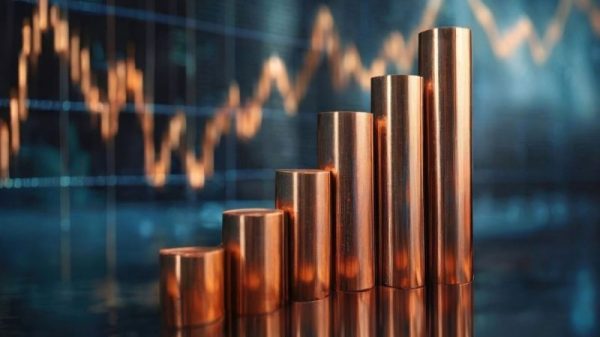Global uncertainty continued to drive volatility in the lead market in 2023, with prices staying yo-yoing throughout the year.
The industrial metal’s largest application has traditionally been in lead-acid batteries, while it is also an important material for pigments, weights, cable sheathing and ammunition.
The rise of lithium-ion battery-powered electric vehicles (EVs) as an alternative to the internal combustion engine is likely to weigh on demand for lead-acid batteries; however, EV manufacturers are still making use of this battery type to power electrical systems including lights, windows, navigation, air-conditioning and airbag sensors. Lead-acid batteries additionally have a role to play in renewable energy storage systems.
Lead is typically mined as a by-product of zinc, silver and to a lesser extent, copper. Demand changes and mining disruptions for these metals can play an outsized role in shaping the supply side of the lead market.
How did lead perform in 2023?
Starting off the year above the US$2,300 per metric ton (MT) level, the lead price quickly shed nearly 11 percent in the first three weeks of the year on weak demand concerns.
Lead rose to touch the US$2,300 level once again in June, which analysts at Wood Mackenzie attributed to the suspension of operations at Newmont’s (NYSE:NEM,TSX:NGT) Peñasquito polymetallic mine in an “already tight” lead concentrate market. “Strong OE automotive figures were also supportive on the demand side of lead’s market fundamentals. However, the wider macroeconomic picture has been less robust recently, particularly in China,” stated the June report summary.
Although lead prices would test the US$2,300 level again in September, Peñasquito’s return to production in October pushed prices back down to around US$2,064 per MT. Confirmation of this restart coincided with lead prices weakening notably relative to other LME prices, stated Wood Mackenzie.
Lead prices slipped by nearly 14 percent from the start of 2023 to their lowest point of the year at US$1,973 per MT on December 7.
Lead’s price performance in 2023.
Chart via TradingEconomics.
A December market report from the International Lead and Zinc Study Group (ILZSG) shows that in the first ten months of 2023, global supply of lead exceeded that of demand by 41 thousand tonnes. Worldwide lead mine production rose by 1.5 percent and lead metal production was up by 2.8 percent over the same period in 2022, while consumption of the metal rose by a mere 0.3 percent.
The January launch of production at Galena Mining’s (ASX:G1A) Abra lead-silver mine in Australia, notes the ILZSG, contributed to the rise in mine production. The first major lead-only mine to be brought into production since 2005 has an annual lead production capacity of 95 thousand tonnes.
China, both the world’s largest producer and consumer of the metal, increased its imports of lead concentrates by 22 percent, with exports of refined lead metal growing by more than 64 percent compared to the first ten months of 2022. In ILZSG’s October 2023 forecast, the group attributed the growth in Chinese demand for lead to the 13.4 percent increase in lead-acid battery output over the first seven months of 2023.
What factors will move the lead market in 2024?
Heading into 2024, what supply and demand factors are expected to drive prices for lead?
The ILZSG forecasts that world mine supply will rise by 2.9 percent in 2024 to 4.71 million tonnes, compared to 3.3 percent growth in 2023. Increased lead supply is seen coming out of Australia, the second largest lead producing country, as well as other top producers such as India and Russia.
Market participants will also be keeping an eye on Peru’s federal elections in April 2024. The country is the world’s five largest lead producer, and has a strong project pipeline. However, political instability and ongoing protests against mining projects could have a negative impact on mining investment in the country, reports Mining Weekly.
New sources of mine supply for lead in 2024 include Adriatic Metals’ (ASX:ADT,LSE:ADT1,OTCQX:ADMLF) Vares silver mine in Bosnia and Herzegovina, which is expected to begin production in January, barring any further delays.
Looking over at global refined lead supply, ILZSG sees a 2.3 percent increase to 13.14 million tonnes in 2024, compared to a 2.7 percent increase on the books for 2023 and a 1.7 percent decline in 2022. The restart of Trafigura’s Stolberg smelter in Germany is expected to contribute to increased refined lead supply for 2024.
As a by-product metal, the global supply of lead is also tightly tied to zinc mine production. A too-low price environment for zinc can prompt miners to curtail operations as the cost of production eats into their margins. In 2023, zinc has been the second-worst performing metal on the LME after nickel due to a massive supply overhang amidst stilted demand.
With economic uncertainty still weighing on global markets as we head into 2024, that supply imbalance is expected to remain. “Regarding the global market balance, the Group anticipates that global supply of refined zinc metal will exceed demand in both 2023 and 2024 with the extent of the surpluses forecast at 248,000 tonnes and 367,000 tonnes respectively,” stated the ILZSG.
What about global demand for lead? “Demand-wise, much will depend on the strength of the automotive sector, the health of China’s industrial sector and the pace of monetary easing in Western economies,” said Economist Adrià Solanes.
Looking at the global automotive market, an S&P Global Mobility report shows a projected increase of 8.9 percent in new light vehicle sales for 2023 over the previous year. However, that figure in 2024 is set to drop to only a 2.8 percent increase in sales.
The rising cost of living in many countries brought about by growing inflation and higher interest rates will still be front of center heading into 2024, which will no doubt hamper consumer demand for vehicles.
‘2024 is expected to be another year of cagey recovery, with the auto industry moving beyond clear supply-side risks, into a murkier macro-led demand environment,’ Colin Couchman, executive director of global light vehicle forecasting for S&P Global Mobility, stated in the report.
As the largest consumer of lead, China’s economic health is definitely a factor for investor consideration. The World Bank is forecasting 5.2 percent annual growth in 2023 for China, the world’s second largest economy, and calling for slower growth of 4.5 percent in 2024 and 4.3 percent in 2025. The weakest segment of China’s market has been its property sector, with investment down 9.4 percent in 2023. Lead has several important applications in housing and infrastructure construction.
However, demand for refined lead metal in China is forecast to grow by 2.4 percent in 2024 after a projected 1.9 percent of demand growth in 2023, according to ILZSG data. That’s compared to a significant decline of 6.4 percent for 2023 in the United States with a recovery of 3.1 percent forecast for 2024. On a global scale, demand for refined lead metal is set to increase by 2.2 percent in 2024, after a 1.1 percent increase in 2023. Demand for lead is also expected to rise in India, Japan and Korea.
Despite these increases in demand, the ILZSG “anticipates that global supply of refined lead metal will exceed demand by 35,000 tonnes in 2023. In 2024, a larger surplus of 52,000 tonnes is expected.”
What other key trends and catalysts should investors look out for in the lead market in 2024? “Stimulus policies in China will be a key short-term catalyst of demand for the metal. Timely and substantial support to the industrial and property sector would boost lead prices,” Solanes explained.
In mid-2023, China’s National Development and Reform Commission announced economic stimulus measures to spur growth in the auto, property and consumer goods sectors. Market participants will be watching for any impact China’s economic stimulus measures might have for the lead sector as well as any additional measures that may be on the horizon in 2024.
Over the longer-term, the transition away from fossil fuels to renewable energy sources presents an avenue of demand in the lead market. “The main underlying trend to monitor is the switch to green and electric energy, as lead-acid batteries are widely used to power both low-voltage and renewable energy systems,” added Solanes.
Securities Disclosure: I, Melissa Pistilli, hold no direct investment interest in any company mentioned in this article.






































